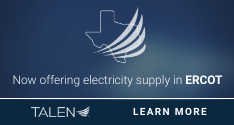|
|
|
|
|
Massachusetts Utilities Report Low-Income Customers Paid Over $30 Million More On Competitive Supply Versus Basic Service During Past ~2.5 Years
The following story is brought free of charge to readers by EC Infosystems, the exclusive EDI provider of EnergyChoiceMatters.com
The Massachusetts electric and natural gas utilities have reported "incremental" supply costs paid by low-income customers on competitive supply versus basic service, as well as the impact on the Residential Assistance Adjustment Factors (RAAF)
Data for the two largest electric utilities, Nstar (Eastern service area) and National Grid are reported below
From January 2018 to to March 2020, Nstar, for its Eastern service area, reported that the supply costs that would have been billed to R-2 customers served by individual competitive suppliers if all were on the fixed basic service rate were $11.8 million lower in aggregate than the actual supply costs paid by shopping customers over the period. In no month during the period were the supply costs that would have been billed to R-2 customers served by individual competitive suppliers, if all were on the fixed basic service rate, higher than the actual costs billed by the competitive suppliers in aggregate
Nstar reported that, for its Eastern service area, $4.2 million of such incremental supply costs were recovered through the Residential Assistance Adjustment Factors (RAAF), while $7.6 million were recovered from low-income ratepayers
Nstar's reporting of the incremental typical monthly bill impact of the individual competitive supply market on the RAAF appeared to have an error regarding the positive/negative sign in one of the columns (due to the formula used in the DPU's template); however, based on other reported data (if shown correctly), the impact on the RAAF from the individual competitive supply market appears to be about -$0.10, for Rate R customers.
National Grid reported that from October 2017 to March 2020, the supply costs that would have been billed to R-2 customers served by individual competitive suppliers if all were on the fixed basic service rate were $18.8 million lower in aggregate than the actual supply costs paid by customers over the period. In no month during the period were the supply costs that would have been billed to R-2 customers served by individual competitive suppliers, if all were on the fixed basic service rate, higher than the actual costs billed by the competitive suppliers in aggregate
National Grid reported that $5.5 million of such incremental supply costs were recovered through the RAAF, while $13.3 million were recovered from low-income ratepayers
National Grid reported that the incremental typical monthly bill impact of the individual competitive supply market on the RAAF, for Rate R customers, was about $0.11 in 2019 and 2020 (illustrative)
Docket 19-07
ADVERTISEMENT Copyright 2010-20 Energy Choice Matters. If you wish to share this story, please
email or post the website link; unauthorized copying, retransmission, or republication
prohibited.
July 20, 2020
Email This Story
Copyright 2010-20 EnergyChoiceMatters.com
Reporting by Paul Ring • ring@energychoicematters.com
NEW Jobs on RetailEnergyJobs.com:
• NEW! --
Billing Specialist -- Retail Supplier
-- Texas
• NEW! --
Director - Distributed Generation, Demand Response, & Market Participation -- Houston
• NEW! --
Retail Energy Account Executive -- Houston
• NEW! --
Business Development Manager
|
|
|
|









